Welcome | Registration | Program | Speaker Bios and Abstracts | Hotel | Abstracts and Digital Posters | Sponsors
Speaker Bios and Abstracts
Golden Medallion Award Recipient:
Salvatore J. Esposito, DMD, MS, FICD
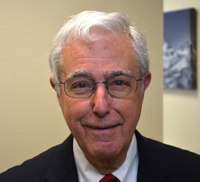
Biography- Dr. Esposito completed his Prosthodontic Residency at the University of Buffalo and the VA Hospital in 1974 and earned his certificate in Maxillofacial Prosthetics from the Roswell Park Cancer Center in 1975. He is past Chairman of the Department of Dentistry, Oral Surgery and Maxillo-facial Prosthetics at the Cleveland Clinic Foundation, a position he held for 25 years. Prior to that, he was head of the Section of Maxillofacial Prosthetics, Department of Surgery at the Metro Health Medical Center in Cleveland, Ohio. Dr. Esposito has held leadership positions in many Prosthodontic and Dental organizations. He is past President of the American Academy of Maxillofacial Prosthetics, and the Maxillofacial Foundation; the American Prosthodontic Society and its Executive Director for 6 years; and the International Society of Maxillofacial Rehabilitation, for which he was a Founder and its first president. He has also served on the board of directors of the American Cancer Society, the Greater Cleveland Dental Society, The Ohio Dental Society and the Editorial Counsel of the Journal of Prosthetic Dentistry. In addition he is a fellow of the Academy of Prosthodontics and the International College of Dentistry. Dr. Esposito is an adjunct Associate Professor at the Case Western Reserve School of Medicine and Dental Medicine and has been a visiting professor at the UCLA and SUNY at Buffalo Colleges of Dentistry and the University of Turin in Torino, Italy. He has lectured worldwide on the subjects of complete and implant retained dentures as well as the prosthetic rehabilitation of patients with head and neck deformities. Among his many awards are the Andrew J. Ackerman Award for outstanding service to the specialty of maxillofacial prosthetics, the Thai (Thailand) Prosthodontics Award, and the Founders Medal from the international Society of Maxillofacial Rehabilitation. He has been recognized as one of the top 100 dentist in the U.S. He is the co-author of the textbook titled Maxillofacial Rehabilitation, and has over 50 published articles and book chapters in medical and dental literature. For the last 15 years Dr. Esposito has practiced full time privately in Beachwood, Ohio where his practice is limited to complete dentures, implant supported prosthetics and the prosthetic management of patients with head and neck deformities.
Kenneth D. Rudd Award Recipient:
Vincent Fehmer, MDT
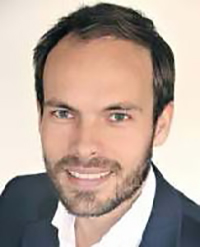
Biography- Vincent Fehmer received his dental technical education and degree in Stuttgart, Germany in 2002. From 2002 to 2003, he performed fellowships in Great Britain and the US in Oral Design certified dental technical laboratories. From 2003 to 2009, he worked at an Oral Design certified laboratory in Berlin, Germany - The Dental Manufaktur Mehrhof. In 2009, he received the degree as an MDT in Germany. From 2009 to 2014, he was the chief dental technician at the Clinic for Fixed and Removable Prosthodontics in Zurich, Switzerland. Since 2015, he is dental Technician at the Clinic for Fixed Prosthodontics and Biomaterials in Geneva, Switzerland and runs his own laboratory in Lausanne Switzerland.
The recent digital technology offers numerous new and efficient options for restorative dentistry. Within digital dentistry the optical impressionning is the first step towards a digitalization of the patient’s intraoral situation. The resulting digital file is then used for the virtual plannification and the virtual design of reconstructions, which thereafter can be milled out of prefabricated blanks of different materials with aid of CAD/CAM systems. The digital systems available today offer numerous advantages, like e.g. the precision of the reconstructions. A high number of studies has demonstrated good accuracy of the current subtractive manufacturing, i.e. the computer-aided milling or the grinding of ingots. More recently, additive procedures have been introduced. Stereolithography, laser sintering or printing of materials like wax, resins or metals has shown to be even more precise than the subtractive manufacturing. Finally, the "digital workflow“, is not only interesting for the fabrication of dental reconstructions but also for a better patient/dentist communication.
Learning Objectives:
- learn how to efficiency transfer the digital diagnostics into a final reconstruction
- learn about the one time one crown concept as a very efficient treatment protocol
- learn about the restorative options, their possibilities and limitations of monolithic restorations
Prof. Dr. Petra Guess Gierthmuehlen
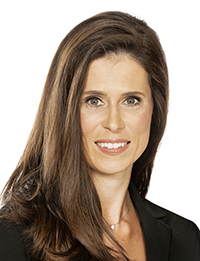
Biography- Dr. Guess, graduated and received her DDS from Albert-Ludwigs University, Freiburg, Germany in 2001. She was an Assistant Professor (2001-2006) at the Department of Prosthodontics (Chair Prof. Dr Dr. h.c. J.R. Strub), University, Freiburg, Germany and is a Board certified Prosthodontist (2005) of the German Society of Prosthodontics and Dental Materials (DGPro). From 2006-2009 she was a Visiting Scientist at the Department of Biomaterials & Biomimetics (Chair Prof. Dr. V.P. Thompson), NYU, New York, USA. In 2009 Dr. Guess was appointed Associate Professor at the Department of Prosthodontics, University, Freiburg, where she accomplished the Habilitation in 2011. Since 2016 she is Professor and Chair of the Department of Prosthodontics at the Heinrich-Heine University in Duesseldorf, Germany.
Minimally Invasive Concepts & Digital Dentistry- Where Are We Now?
CAD/CAM technology is one of the fastest evolving aspects in modern restorative dentistry. Major advantages of intraoral scanning and the digital workflow are patient´s preferences, superior mechanical performance of CAD/CAM materials as well as excellent fit of these restorations. The impaired machinability of many CAD/CAM materials has been a limitation for many years resulting in marginal chipping of minimally invasive restorations. But novel chairside milling devices are now available for faster fabrication times with protocols that are adjusted to the respective CAD/CAM material. Complex reconstructions still represent a great challenge for clinicians and dental technicians but digital workflows significantly facilitate these rehabilitations. Various tools were developed to evaluate the relationship between the different components of the face and to provide guidance for treatment planning as well as for the manufacturing of the final restorations. Advancements in CAD/CAM material systems, digital restoration planning and fabrication resulted in innovative treatment concepts for severely compromised dentition. Digital face scans and novel CAD/CAM applications offer a standardized manufacturing process, providing a reliable, predictable and economic workflow for chairside but also complex rehabilitations.
Mario Imburgia, DDS, PhD
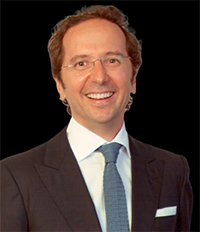
Biography- Graduated with honors in Dentistry. Doctorate research in Periodontology (University of Palermo - Italy). Active member of the Italian Academy of Prosthetic Dentistry, Fellow of the International Academy of dental-facial aesthetics (IADFE) and board member of the Digital Dentistry Society. Assistant Clinical Teacher at the University of Warwick 2011-2014 (Coventry - UK). Visiting Professor at the "City of London" Dental School (London - United Kingdom) and BPP University (London - United Kingdom). Lecturer at the Masters Course in Esthetic & Digital Dentistry (Universities of Siena, University of Rome 'La Sapienza?, University of Insubria, University Vita Salute San Raffaele Milan and University of Rome ?Tor Vergata?). Visiting Professor, International Master in Prosthodontic Sciences (University of Siena - Prof. Marco Ferrari). Adjunct Assistant Professor, Eastman Institute for Oral health - University of Rochester (Prof. Carlo Ercoli). Speaker at national and international conferences, on topics related to aesthetic and prosthetic dentistry. Author of the book "iPad in Dentistry - Digital communication for the patient and for the team" and ?Minimal Invasive Esthetic Rehabilitation? published by Quintessence Publishing. Private practice in Palermo and Milan (Italy).
VertiCAD for Ceramic Restorations: An Innovative Treatment Concept for Veneers Restorations
The esthetic treatment through adhesive restorations has always presented a challenge in clinical practice. With the improvement of dental materials, many restorative options such as composite resins, all- ceramic crowns, and ceramic veneers have become available. The current challenge in restorative dentistry is to obtain excellent esthetic results while preserving the biological structures involved as much as possible. New generation all-ceramic restorations and adhesive systems allow a greater preservation of residual hard tooth structures, especially with regard to single elements. The constant development of the digital workflow enable the dental team to control many aspects of the restorative plan, increasing the predictability and the efficiency of the treatment. The lecture will be focused on a step by step procedure for strategical preservation of tooth structure in veneers preparation, showing also new trends and techniques in the digital workflow.
At the conclusion of this session, attendees should be able to: Recognize pros and cons of various types of ceramic veneer preparation, and the advantages and limitations of the feather edge preparation approach. Show the modern data collection and the matching of these in a virtual environment. Describe the digitally detected aesthetic parameters that can influence the design of our restoration. Discuss how perform a digital smile design in 3D, getting a lot more informations and checking them constantly.
Prof. Dr. med. dent. Ronald E. Jung, PhD
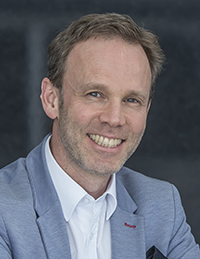
Biography- Ronald Jung is trained in oral surgery, prosthodontics and implant therapy. He is currently Head Division of Implantology at the Clinic of Reconstructive Dentistry, Center of Dental Medicine, University of Zürich. In 2006 he worked as Visiting Associate Professor at the Department of Periodontics at the University of Texas Heath Science Center at San Antonio, USA (Chairman: Prof. Dr. D. Cochran). 2008 he finalized his ?Habilitation? (venia legendi) in dental medicine and was appointed at the University of Zürich. In 2011 he became his PhD doctorate degree of the University of Amsterdam, ACTA dental school, The Netherlands. In 2013 he worked as Visiting Associate Professor at the Department of Restorative Dentistry and Biomaterials Sciences at Harvard School of Dental Medicine in Boston, USA. In 2015 he has been promoted to full Professorship for Implantology at the University of Zurich. He is an accomplished and internationally renowned lecturer and researcher, best known for his work in the field of hard and soft tissue management and his research on new technologies in implant dentistry. He is currently Treasurer of the EAO, Past President of the Swiss Society of Reconstructive Dentistry and member of the Board of Directors of the Osteology Foundation.
Decision Making in Implant Prosthetics - What Have We Learned From Wrong Decisions and Complications?
For successful implant prosthodontics safety, long-term performance, costs and the esthetic outcome are the main factors for the decision making process. Important achievements in this field have undoubtedly been the introduction of digital impressions, 3D planning and designing softwares, 3D printing and CAD/CAM technology in implant dentistry. The digitalization process in implant prosthodontics has introduced a lot of new opportunities and material options, which help solving currently clinical and dental laboratory challenges. As many of these techniques are already available in clinical practice it is of great importance to evaluate the advantages and disadvantages of these techniques and materials in clinical applications. Hence, the aim of this lecture is to discuss and compare CAD CAM in prosthodontics from start to finish with the conventional workflow and conclude with the today?s recommendations.
Learning Objectives:
- Evaluate the safety aspects of different type of implant reconstruction and to select the appropriate material and design
- Differentiate between the conventional and the CAD CAM workflow in implant prosthodontics
- Learn and understand the efficiency of the different type or workflows (conventional vs CAD CAM) and their advantages and disadvantages for the dentists and the dental technicians.
*Instructor has disclosed Affiliation/Financial Interest with the following companies: Straumann, Dentsply, TRI, Henry Schein, Vita, Geistlich
Joseph Kan, DDS, MS
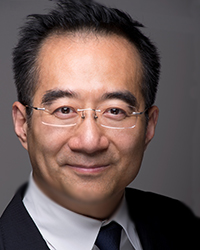
Biography- Dr. Kan completed Prosthodontics and Implant Dentistry from Loma Linda University. He is a Professor and maintains a private practice.
2 Decades of Esthetics Immediate Tooth Replacement: Mistakes Made, Lessons Learned
Esthetics immediate tooth replacement, a controversial, yet exciting treatment concept that was conceived more than 2 decades ago. While the concept has evolved over time, numerous debates had been dedicated to its validity. Now, 23 years later, questions remain: Does it maintain gingival esthetics? Does it work as well as implant in healed sites? Is it a viable option for replacement failing maxillary anterior teeth? This presentation will focus on pros and cons of esthetics immediate tooth replacement. More importantly, did we validate this procedure from lessons learned by mistakes made over the past 2 decades?
Sonia Leziy DDS, Dipl Perio, FCDS(BC), FRCD(C)
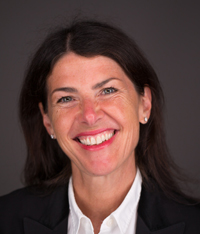
Biography- Dr. Sonia Leziy, periodontist, maintains a full time practice- Vancouver Island, British Columbia. She is a clinical associate professor at the University of British Columbia. She was awarded the Lucy Hobbs Award for mentorship in 2013, the Saul Schluger Award for excellence in teaching and education in 2014; she is recognized by Dentistry Today as a leader in continuing education. She is a member of the ITI Board of Studies. She is a member of numerous editorial boards, and is published in the areas of implant esthetics, soft tissue procedures and digital workflow concepts. She lectures extensively nationally and internationally, and provides hands-on education programs through Elatus Dental Bio-Architecture (www.elatus.ca).
Contemporary Tissue Management for Teeth and Implants- Understand What Your Periodontist Can Accomplish
Several incision, flap designs and different materials have been advocated to treat recession and dehiscence defects around teeth and implants. The goal of this presentation is to discuss the pros and cons of varying approaches and provide clinical insights on the success of these procedures. Additionally, indications and precautions of differing protocols will be demonstrated and critiqued. Standard and digital methods to assess the long-term stability of the quantity and quality of grafted sites will also be presented.
At the conclusion of this session, attendees should gain an understanding of:
1. Tissue enhancement protocols- standard of care vs. experimental
2. Documentation strategies- defining when treatment needs to be considered & assessing outcomes
3. Timing of augmentation procedures relative to implant surgery
Jose Carlos Martins da Rosa
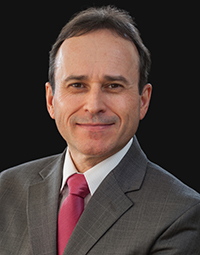
Biography- Graduation course in Dentistry, Federal University of Santa Maria, UFSM, Santa Maria/RS, Brazil, 1988. Specialization course in Periodontics, Associação Paulista dos Cirurgiões-Dentistas, APCD, Bauru/SP, Brazil, 1991. Specialization course and Master of Science in Prosthesis, CPO SLMandic, Center of Dental Research São Leopoldo Mandic, Campinas/SP, Brazil, 2005. PhD in Implantology, CPO SLMandic, Center of Dental Research São Leopoldo Mandic, Campinas/SP, Brazil, 2014. Author of the book: Immediate Dentoalveolar Restoration (IDR) by Quintessence Publishing. Private Practice, Caxias do Sul, RS, Brazil.
Immediate Dentoalveolar Restoration (IDR) - Preservation and Regeneration of the Natural Biology
The Immediate Dentoalveolar Restoration (IDR) is a surgical and prosthetical technique established to broaden indications for immediate loading on individual teeth. In this way, bone and soft tissue losses are reconstructed in the same surgical session of implant placement and provisional crown installation using bone graft harvested from maxillary tuberosity, reducing the number of interventions and keeping predictability on esthetic aspects. The IDR protocol was developed more than 13 years ago from the need to minimize the treatment time and morbidity of reconstructive procedures used in these cases in comprimiseed alveolar sockets.
In the lecture I'll discuss the scientific basis, the step-by-step technique, indications and bone biology. The IDR technique, which advocates minimally invasive surgery, flapless procedures, is presented as a viable and reproducible alternative.
It is presented several cases, which showed one or more compromised socket walls of the tooth involved, with or without changes of the gingival margin, with long-term of clinical, radiographic and CT scan follow-up.
Edward A. McLaren, D.D.S., M.D.C.
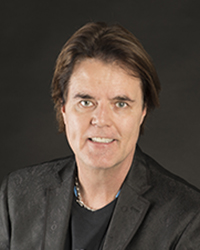
Biography- Dr. McLaren is a Prosthodontist and Master Dental Ceramist. Dr McLaren is a retired Professor from both UCLA and UAB School of Dentistry. He was founder and first director of the Post Graduate Esthetic Dentistry at the UCLA school of Dentistry. He was the director of the UCLA Center for Esthetic Dentistry, a full time didactic and clinical program for graduate dentists. He was also the founder and director of the UCLA/LACC Master Dental Ceramist program. The post-graduate program is a full-time master ceramist program for dental technicians featuring extensive experience with the newest esthetic restorative systems. At UAB he was founder and first director of the Advanced Dental Esthetics, founder director of the Advanced Dental Esthetics, Restorative & Biomaterials Program, founder and director 3-year advanced ceramics and digital technology for technicians program, founder and director one-year esthetic and restorative fellowship Restorative & Biomaterials Program, founder and director 3-year advanced ceramics and digital technology for technicians program, founder and director one-year esthetic and restorative fellowship. Dr. McLaren currently is the CEO of ArtOral America a private teaching institute based in Park City Utah, he maintains a private practice limited to prosthodontics and esthetic dentistry in which he did all of his own ceramics. Dr. McLaren is still actively involved in many areas of prosthodontic and materials research and has authored or co-authored over 90 articles. He has presented numerous lectures, hands-on clinics and postgraduate courses on ceramics and esthetics across the nation and internationally. He recently published a book, on his ceramic techniques and features dental photographic art, entitled ?The Art of Passion: Ceramics, Teeth, Faces, and Places.?
SURFACE: Creating Natural Contours, Texture, Luster and Surface Color in Dental Restorations
The final touches of contour, texture, surface colorants, and luster can take average looking dental restorations and create an exceptionally esthetic result. These steps are critical to the success of dental restorations weather it is composite or ceramics. These skills are more necessary now than ever as monolithic restorations are now the predominate type of indirect restoration. The lecture will cover the esthetics of the individual tooth i.e. the unique form and texture patterns of Anterior teeth and color distribution patterns that can be somewhat mimicked with surface color. The lecture will detail the very specific armamentaria and techniques to create ideal ?Surfaces? both in Color and finish specically with the newer generation Monolithic Materials Cubic Zirconia and High Strength Glass Ceramics. As a bonus the presentation will cover specific materials and techniques to get Ideal surfaces on Composites, Porcelain, and even in wax as all materials require very different procedures and armamentaria.
Ricardo Mitrani, DDS
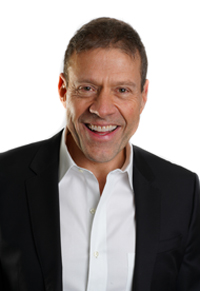
Biography: Dr Mitrani received his DDS degree from the Unitec University of México City; a certificate in Prosthodontics as well as a Master of Science in Dentistry from the University of Washington, where he served as the Graduate Prosthodontics programs assistant director during the year of 2001. He currently holds academic affiliations at the University of Washington, and is a resident faculty at SPEAR Education in Scottsdale Arizona He is a member of several organizations including the American Academy of Esthetic Dentistry and the American Academy of Restorative Dentistry. He is part of the editorial board of the Journal of Esthetic and Restorative Dentistry (JERD), The Journal of Cosmetic Dentistry (JCD) and Compendium, as well as the Executive director of Spear Digest. Dr Mitrani has authored numerous scientific publications and chapters in textbooks in the fields of Implant Prosthodontics and Aesthetic dentistry and has given close to 600 lectures around the globe, maintaining a private practice limited to Prosthodontics, Implants and Aesthetic dentistry in Mexico City.
TERMINAL DENTITION… Where do we draw the line???
For over a decade, the term “Terminal Dentition”, has unquestionably gained a lot of traction in the dental community, and it implies that there is a need to remove a patient’s remaining dentition. But how do we reach such stage or conclusion? Does it mean the same to everybody? The reality is that the term Terminal Dentition is actually a “dentist made term”. Of the same token, until this day, there seems to be confusion among dental practitioners as to what is the ideal prosthetic solution for these patients. This presentation will discuss a linear though process that allows the treating team to decide when to choose to give up hope on the remaining dentition and how to decide among the different restorative designs available.
Learning Objectives:
1. Review a simple Classification (LTR Classification) that helps identify the patient´s condition and therefore decide the ideal treatment design for each given patient.
2. Review the different implant assisted/supported prosthetic solutions.
3. Improve communication amongst the treating team.
4. Review a treatment planning algorithm that allows the treating team to follow a linear thought process in assessing the remaining dentition.
Panos Papaspyridakos DDS, MS, PhD
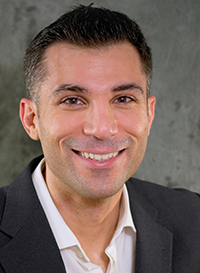
Biography- Dr. Panos Papaspyridakos serves as an Associate Professor of Postgraduate Prosthodontics at Tufts University School of Dental Medicine and as Adjunct Associate Professor at the University of Rochester Eastman Institute for Oral Health. Additionally, he maintains a private practice limited to Prosthodontics and Implant Dentistry in Boston. Dr. Papaspyridakos has authored more than 100 articles, abstracts and book chapters in peer-reviewed journals and textbooks and he frequently lectures in national and international dental meetings, while he serves as reviewer for several dental journals. His innovative clinical implant research is widely cited and has received international acclaim with educational awards.
Digital Workflow in the Fixed Implant Rehabilitation for Edentulous Patients
Digital technology is gaining increased popularity in all aspects of Implant Dentistry. The applications include imaging, digital planning, template-guided implant placement, digital impressions with intraoral scanners and CAD/CAM prostheses. Digital planning software for treatment planning, digital impressions and 3-D printers are currently integrated with CAD/CAM technology for efficient treatment workflow. This presentation will address the current scientific status and the future trends for digital workflow in fixed implant rehabilitation for edentulous patients.
At the conclusion of this session, attendees should be able to:
1. Describe the various applications of digital technology in fixed implant rehabilitation
2. Discuss the scientific evidence for the applications of digital technology in implant dentistry
3. Illustrate step-by-step the digital workflow from impression to final rehabilitation for edentulous patients
Irena Sailer
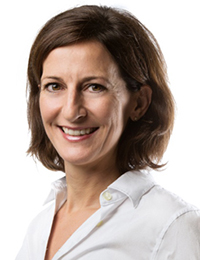
Biography- Irena Sailer received her dental education and Dr. med. dent. degree from the Faculty of Medicine, University of Tübingen, Germany in 1997/ 1998. In 2003 Dr. Sailer received an Assistant Professorship at the Clinic of Fixed and Removable Prosthodontics and Dental Material Sciences in Zurich. From 2010 on she was an Associate Professor at the same clinic. In 2007 Dr. Sailer was a Visiting Scholar at the Department of Biomaterials and Biomimetics, Dental College, New York University, USA. Additionally, since 2009 she holds an Adjunct Associate Professorship at the Department of Preventive and Restorative Sciences, Robert Schattner Center, School of Dental Medicine, University of Pennsylvania. Philadelphia, USA.
Since September 2013 she is the Head of the Division of Fixed Prosthodontics and Biomaterials at the University of Geneva. Irena Sailer is a Specialist for Prosthodontics (Swiss Society for Reconstructive Dentistry), and holds a Certificate of focussed activities in Dental Implantology (WBA) of the Swiss Society for Dentistry. She is a Member of the Board of Directors of the Swiss Society of Reconstructive Dentistry and of the Swiss Leadership Team of the ITI (International Team for Implantology). Furthermore, Irena Sailer serves the Scientific Boards of the European Association of Osseointegration and the Swiss Society of Implantology.
Irena Sailer is also a Member of the Board of Directors of the EAO, an Active Member of the European Academy of Esthetic Dentistry and an Active Fellow of the Greater New York Academy of Prosthodontics. Since beginning of 2019 Irena Sailer is the Editor-in-Chief of the International Journal of Prosthodontics. She is also the author or co-author of more than 100 peer reviewed scientific manuscripts, 6 book chapters and the monograph 'Color in dentistry- a clinical guide to predictable esthetics' together with Dr. Stephen Chu, Dr. Rade Paravina and Mr. Adam Mieleszko (Quintessence publishing). She holds several patents on esthetic coatings of dental/ medical devices and on a digital dental splint.
Monolithic Reconstructions- The Keystone That Will Change DentistryThe recent digital technology offers numerous new and efficient options for restorative dentistry. Within digital dentistry the optical impressionning is the first step towards a digitalization of the patient’s intraoral situation. The resulting digital file is then used for the virtual plannification and the virtual design of reconstructions, which thereafter can be milled out of prefabricated blanks of different materials with aid of CAD/CAM systems. The digital systems available today offer numerous advantages, like e.g. the precision of the reconstructions. A high number of studies has demonstrated good accuracy of the current subtractive manufacturing, i.e. the computer-aided milling or the grinding of ingots. More recently, additive procedures have been introduced. Stereolithography, laser sintering or printing of materials like wax, resins or metals has shown to be even more precise than the subtractive manufacturing. Finally, the "digital workflow“, is not only interesting for the fabrication of dental reconstructions but also for a better patient/dentist communication.
Learning Objectives:
- learn and understand the value of digital diagnostics
- learn how to efficiency transfer the digital diagnostics into a final reconstruction
- learn about the one time one crown concept as a very efficient treatment protocol
- learn about the restorative options, their possibilities and limitations of monolithic restorations
*Instructor has disclosed Affiliation/Financial Interest with the following companies: Camlog, Straumann, ORF, ITi
Amirali Zandinejad DDS , MSc
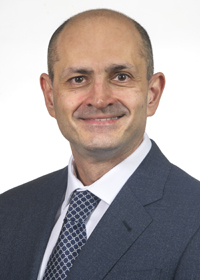
Biography- Dr. Zandinejad, Prosthodontist, is a full-time, tenured, Associate Professor in the Department of Comprehensive Dentistry, and the Director for the AEGD advanced education program at Texas A&M University College of Dentistry, in Dallas. He maintains his private practice, which is limited to esthetic and implant dentistry, in Arlington. Dr. Zandinejad graduated with his DDS in 1996 and his MSc in Restorative Dentistry in 2000. He then continued his education by completing residency programs in Operative Dentistry (2004), AEGD (2007), and Prosthodontics (2011). He started his academic career as an Assistant Professor at the University of Louisville School of Dentistry, in Louisville, Kentucky. He joined the Texas A&M College of Dentistry in 2015 as the Director of the AEGD graduate education program. He was promoted to Associate Professor, with tenure, in 2017. He is the author or co-author of more than 60 scientific manuscripts and abstracts, serves as reviewer for many scientific dental journals, and holds multiple patents on new prosthetic design and bio-inspired dental restorations using 3D printing technologies. He lectures nationally and internationally on new technologies, implant and esthetic dentistry.
Zirconia 3D Printing: The Clinical Application and Future Potential
The unique properties of zirconia ceramic as restorative dental material have attracted the attention of dental profession and today it is widely used in dentistry. Since its introduction, subtractive technology or milling has been the main approach for manufacturing zirconia restorations. However additive manufacturing technology (AM) also known as 3D printing is an alternative manufacturing technology and have been used to manufacture zirconia objects with various techniques including vat photopolymerization (stereo-lithography and direct light processing). 3D printing zirconia enables the production of ceramic parts with complex geometries, high precision, and low cost. Its potential and ability to produce objects with controlled properties and surface texture may expand its application in restorative, implant and regenerative dentistry.
Learning Objectives:
• Review the current applications of zirconia in dentistry
• Advantages of additive manufacturing and available technologies for 3D printing zirconia
• The properties of 3D printed zirconia and its application in clinical dentistry
• The potential and future of 3D printing zirconia in dentistry
Corporate Forum Presentation:
Miles Cone DMD, CDT
Sponsored by GC
One and Done. A Streamlined Dental Cementation Protocol for Low-Retention Restorations: Clinical Case Studies
Recent progress in dental technology and research related to new materials has resulted in an increased number of all-ceramic restorative options available for clinical use. The performance of resin cement on the luting/bonding procedure and their mechanical properties are essential requirements for the long-term success of these ceramics. The variety of brands and types of resin cements currently available may make the selection of material difficult for the dentist. This presentation outline a simplified protocol to meet the needs of challenging, real-world patient treatments utilizing a new-to-market self-adhesive resin cement coupled with a novel adhesive enhancing primer.
